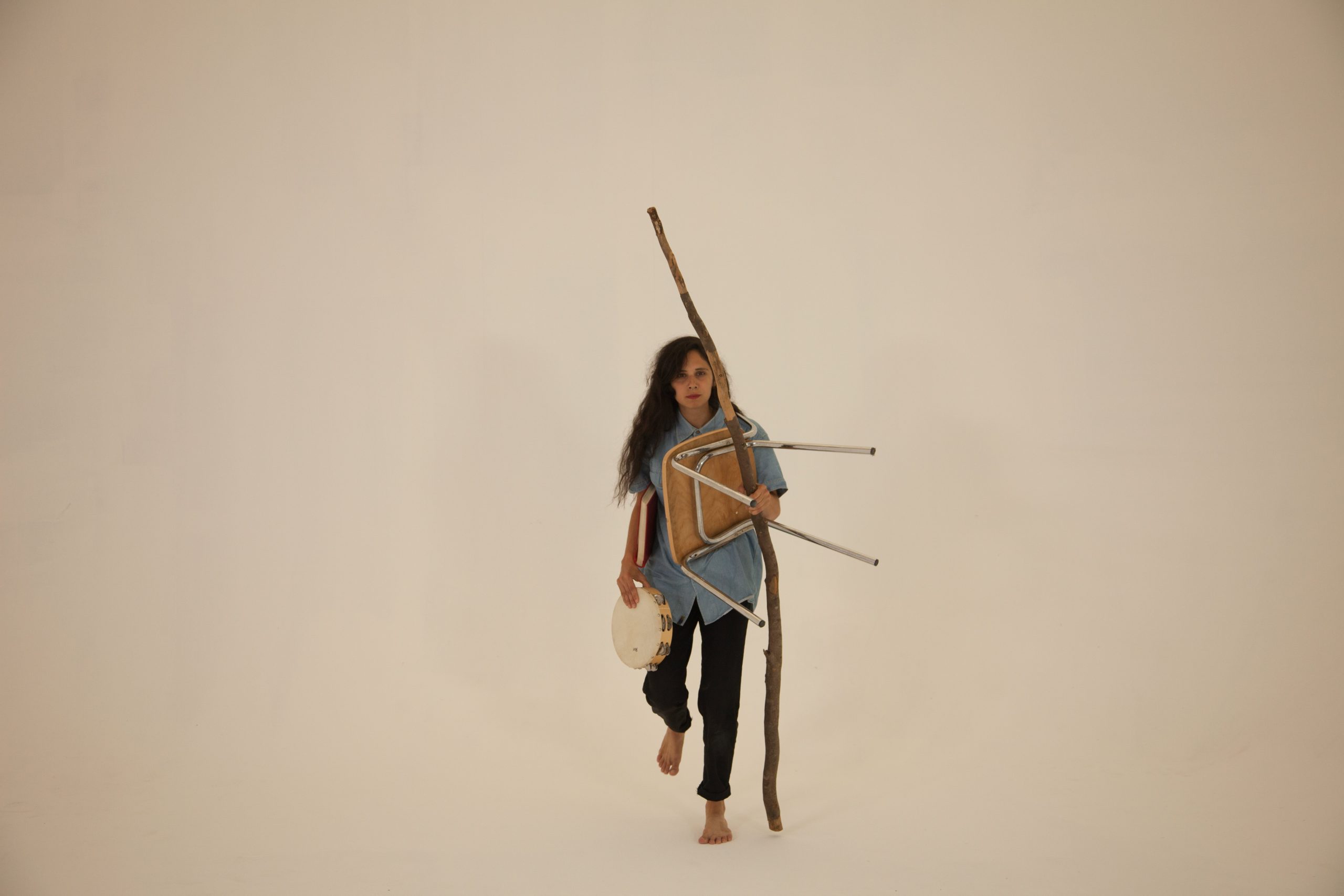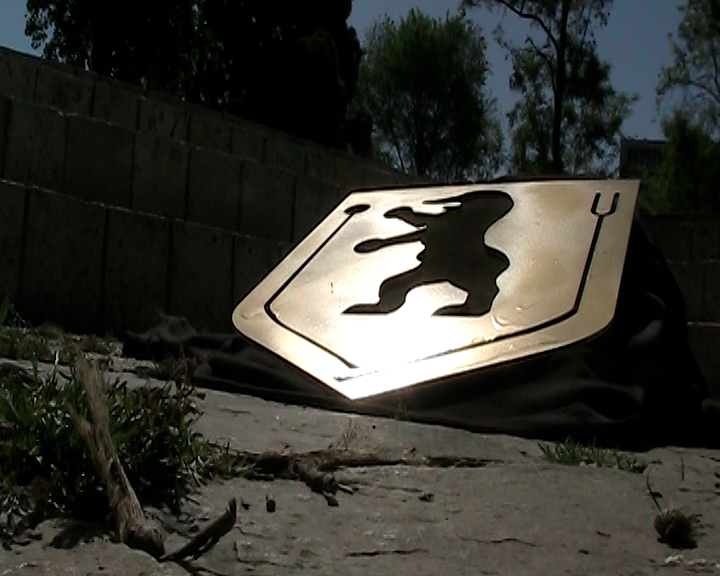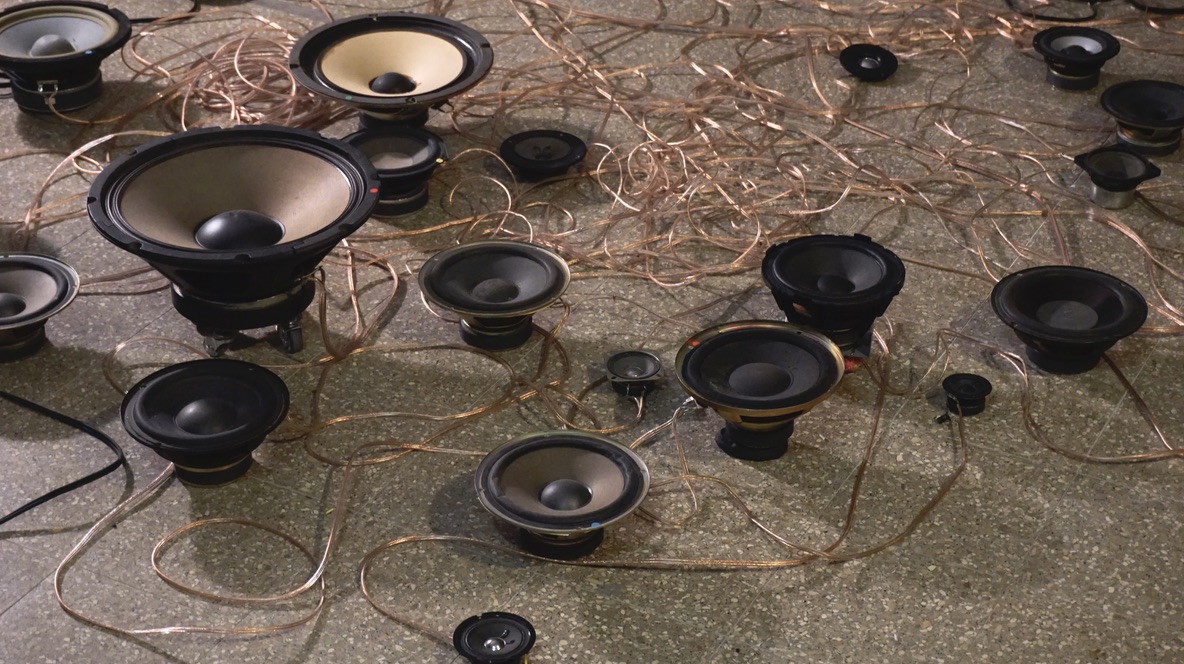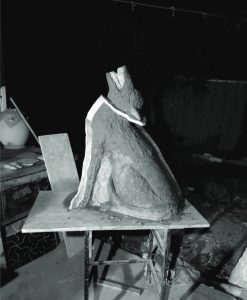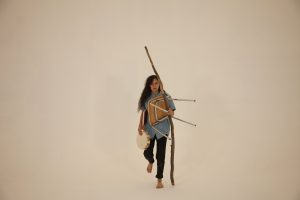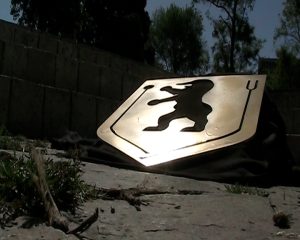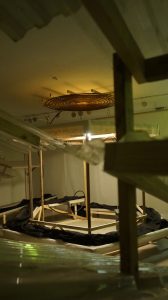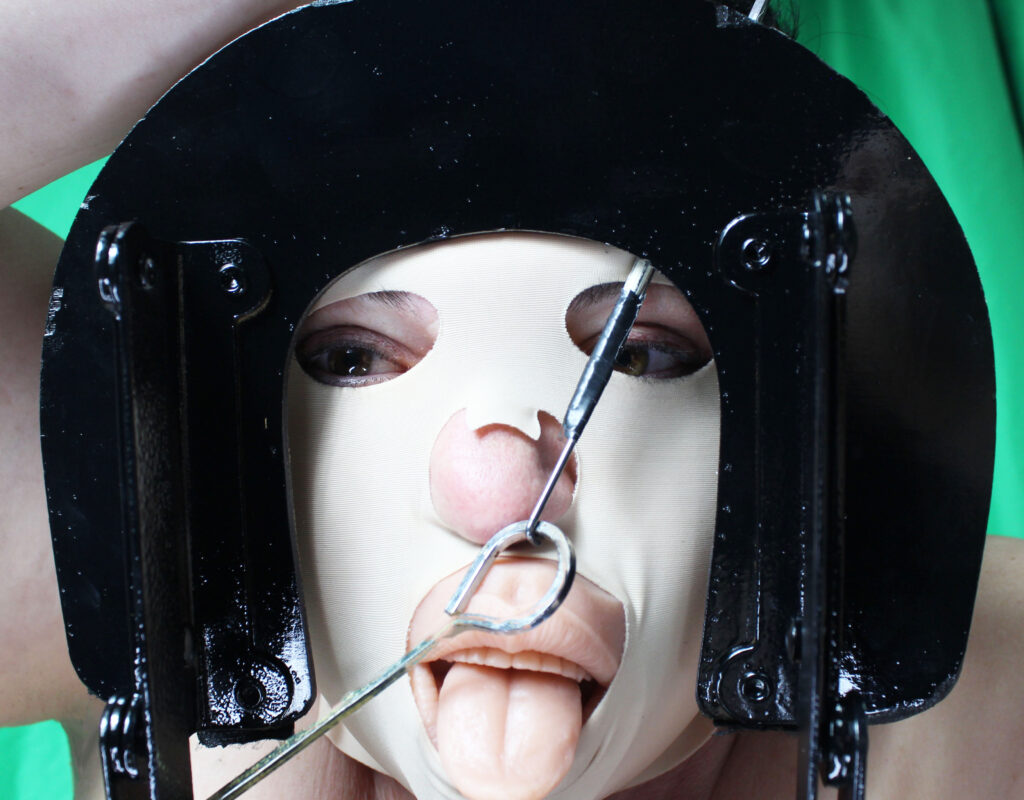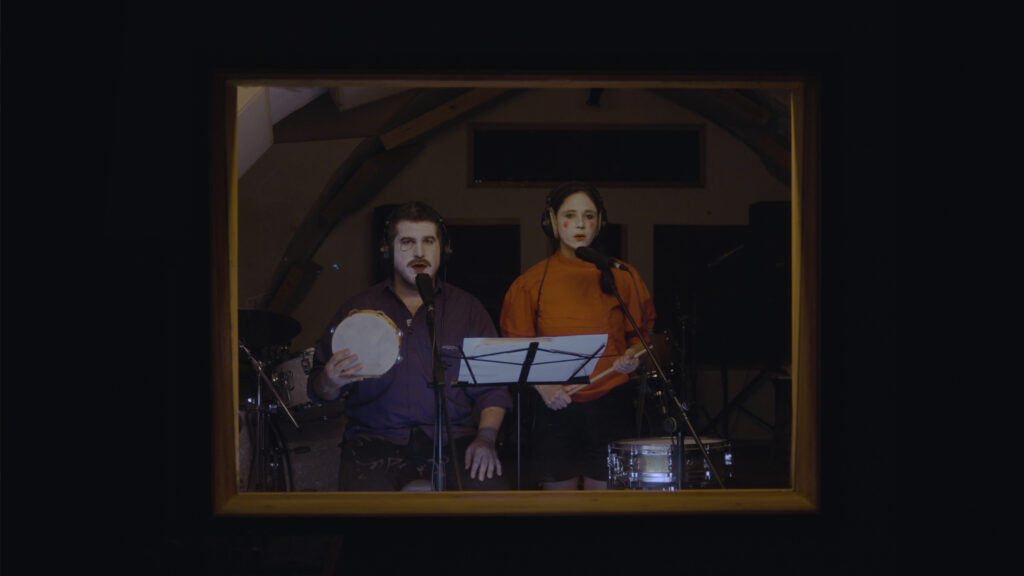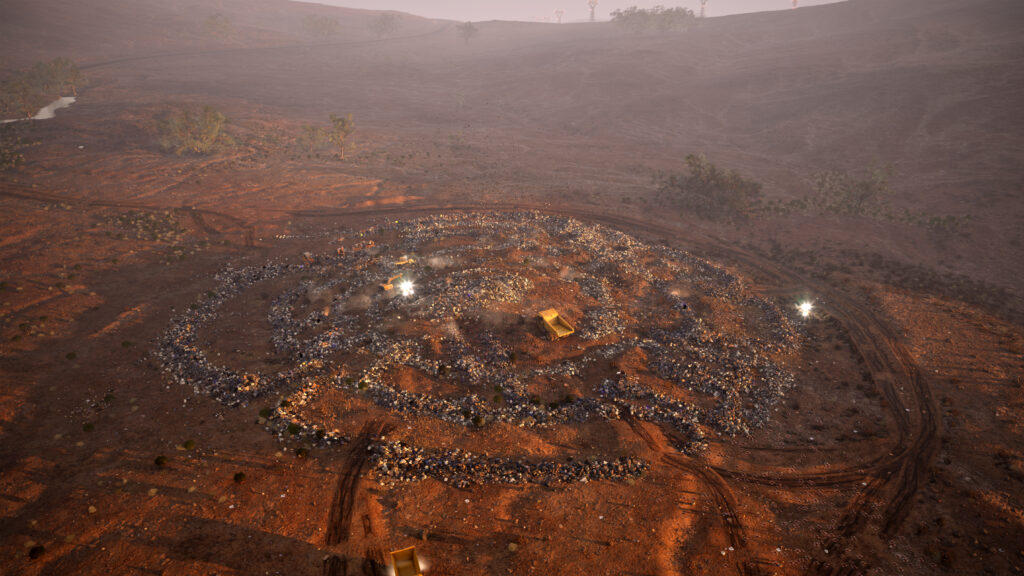Hearsay
- Duration of Activity: 15/12/2023 ועד לתאריך 16/03/2024
A child in the dark, gripped with fear, comforts himself by singing under his breath. He walks and halts to his song. Lost, he takes shelter or orients himself with his little song as best he can. The song is like a rough sketch of a calming and stabilizing, calm and stable, center in the heart of chaos. Perhaps the child skips as he sings, hastens or slows his pace. But the song itself is already a skip: it jumps from chaos to the beginnings of order in chaos and is in danger of breaking apart at any moment.
(Deleuze and Guattari, A Thousand Plateaus (1980), Chapter 11)
The sound and installation exhibition, “Hearsay,” deals with the audible and the relationship between entities through the sounds that surround us. The exhibition explores how sounds and noises create environments and experiences, how they generate situations and places – what constitutes or disrupts our immediate space, and how sound organizes objects, space, and human presence in relation to them.
In their monumental book, A Thousand Plateaus, Gilles Deleuze and Pierre-Félix Guattari elaborate on the concept of ‘Refrain.’ This concept interweaves sound, territory, expression, and order and posits that the audible is a fundamental form of human perception of the world. The idea invites a complex consideration of sound arrangements that often elude our conscious recognition despite their persistent presence and the order they generate. The exhibition was conceived based on this premise, and artists were invited to create sound-based environments.
In the opening scene of Deleuze and Guattari’s text, a child sings to himself in the dark, establishing, through humming, a foothold for logic and the possibility of action. The focal point created by his singing is fleeting and immediate, sustained only as long as he continues humming. The child creates an envelope, shielding himself from what may suddenly erupt and appear, the thing that should be feared, and what the fear itself creates – a breach in the thin envelope of the humming. He is generating the humming against the world and the invisible threat, possibly in an attempt to belong to or disguise himself as the chaos so as not to be consumed in an instant. Similarly, the refrain establishes an imagined territory, a path beyond a specific place that envelops and accompanies us. The audible is considered a fundamental component in the creation mechanism of spatial order and meaning, and as such, it is in constant threat of disruption and disintegration. Indeed, how sounds and voices define a familiar environment for the listener is central to the everyday human experience.
The exhibition delves into the dynamic relationship between the listener and the space and provides sonic envelopes that create real places through the mere presence of the acoustic space. The refrain, voice, and sound establish listening sites and, in various ways, lay the foundation for observation, lingering in a “place,” and constructing systems with an inherent logic that extends beyond the voice that colors and fills them. The title of the exhibition, “Hearsay,” signifies the heard element and the mode of its transmission, but also the manner in which social rumors emerge – they originate from different sources, bearing the distortion of their passage, their fleeting fidelity to facts and truth. The significance of hearsay lies less in the reliability of the information itself than in the fact that it is conveyed in this way. Reiterating a rumor does not confirm its accuracy or closeness to the truth; rather, it implies, first and foremost, the existence of the communicational environment that surrounds us, which of itself is a type of refrain. The hearsay has already been heard; this voice has already claimed a place.
According to Deleuze and Guattari, the recurring refrain envelops us in different forms; it is present even without our awareness, generating the familiar and identifiable around and within us. It remains almost imperceptible, fragile, continuously crumbling and reforming, interrupted by alternate refrains or integrating with them and betraying itself. The recurring refrain exists, among other things, in the familiar environment of home, generating its identity. Specifically, the refrain generates identification for the hearer through the sounds of the home environment. It organizes a defined space through a changing sequence of objects and signs – the hum of the radio turned on in the kitchen, the creak of the door, the cat’s meow, the rumble of the washing machine, the ring of the telephone. The refrain is a changing and recurring rhythm that exists through – often imperfect – repetition. What happens when the home sounds are joined by the noise of the city, shouts from the street, the neighbors’ blaring television, and the person on the other end of the telephone? It is a process of selection and classification, ongoing organization and absorption, or rejection and delay of the exterior. This is just one refrain cycle of many, which can be interrupted at any moment by other refrains that expand into other environments or reduce into an inner voice. The recurring refrain maintains space and environment as long as repetition is perceived consciously or unconsciously. Screeching, disorder, or error within the rhythm of the refrain may destabilize the whole space at any moment and reveal the uncontrolled entry of chaos.
Sometimes, the refrain and the audible have a primary, foundational appearance, a new moment of presence – the founding of a city, the marking of a closed area by drawing or circular pacing combined with ceremonial chanting and dancing. This primary appearance of the refrain defines territory through repetitive rhythm, which creates an envelope by marking its boundaries, and generates a sound that can be recorded in personal or collective memory as a characteristic of a place. From the moment it is created, the environment can change time and again – the envelope can be opened to include other people, extend an invitation, engulf more objects and spaces, or project beyond itself. This sound envelope can move, shift from place to place, distance itself from the home, and exist as an ever-moving space. The refrain is an improvisation that deviates from preconception, borrows from chaos, and samples the outside; it can be flexible, evolving, and changing, while it can also dissolve completely and collapse outwardly.
The works in the exhibition maintain different locations, and they do it through stealing, collecting, and distorting familiar and less familiar voices. They generate places through repetition and signals but also through the encounter of the listener-viewer with the systems that produce the sounds. They create envelopes that isolate the audience from their prior environment and invite them to surrender to the newly created place, and sometimes, they generate the acoustic chambers of our presence in a specific place at the current moment.
The exhibition is supported by the Geothe Institute

Curators:
Udi Edelman, Leila Rose Bari
Participating Artists:
Nimrod Gershoni & Ira Shalit, Tomer Laham, David Lemoin, Daniel Meir, Shahar Mizrahi, Nuni Weisz, Ana Wild, Shahar Yahalom
The Works:
David Lemoin – Rain Machine #6
David Lemoin’s water installation is part of his white noise environment series based on the calming quality of sounds that envelop our everyday life: water, the hum of low electrical voltage, air conditioning systems, and fans. The environment that Lemoin built comes to life when the dripping water creates a rainy room, veiling the stage from the audience. Live music shows and recordings will be held within the installation during the exhibition.
Shahar Mizrahi – The entire useless life of the bridge
In Shahar Mizrahi’s video, a group of physics students ventures into research to find Jerusalem’s fundamental resonance frequency. They meet in labs, darkened rooms, and the Municipality cellar and construct a theoretical experimental arrangement. At the same time, a young woman with bleached hair and headphones, carrying on her back a shield with the lion emblem of the city, roams the streets and takes measurements. The video was inspired by the biblical story of the fall of the walls of Jericho.
Nuni Weisz – .MHz 121.5 +. . .- •. … • -. Ω.
After Reading The Garden of Forking Paths by Jorge Luis Borges, Nuni Weisz began working with a group of speakers’ membranes. She created ephemeral paths in the form of electrical wirings that differ in voltage, thus affecting the sound frequencies sent to the membranes. A track saturated with low frequencies, whose channels are deconstructed so that each is sent to a different group of membranes, generates visible vibrations in the speakers, visually orchestrating the track. A single source of music maintains a spatial environment that is articulated into sub-environments, each featuring a different internal logic. They simultaneously merge into each other while preserving their distinction.
Tomer Laham – Leviathan
Tomer Laham’s hand-woven textile object is a multi-layered representation of a whale’s shed skin. The empty body, slack and heavy, is hung on a wire that crosses the space. In contrast to its natural state, where the whale emits sound in the depths of the sea, it appears here as an empty and sparse acoustic hall, the surface of a large body whose voice we can still imagine.
Ana Wild – Something Out of Nothing
Ana Wild’s installation comprises three parts – a chanting young woman, a thumping staff, and a smoldering bonfire. The objects are orchestrated to the rhythm of the chant, creating a world in language and song. The different parts of the work produce a ritualistic environment where repetitive chanting imbues the objects with mythical meaning.
Daniel Meir – Wandering Ghosts
Daniel Meir created a grid of 16 horn speakers, presenting the viewer with a powerful PA system. The broadcasted sound oscillates between signal, code, and echoes of musical works while revolving around the poem, Hmmm Bomb, written and performed by Eran Hadas. This code is transmitted to an unknown destination, and without a way to fully understand its meaning, it generates urgency and suspense. The signal is cast afar, its source and destination obscure. The changing sound sequence creates a fluctuating dynamic between the soft and meditative and the restless. This project draws on the ideas and study of sonic warfare, and it highlights the rupture between the aspiration to establish direct communication and the resonance of a message sent into the distance.
Nimrod Gershoni & Ira Shalit (Slash-Hood Sound System) – Endless Cassette
Nimrod Gershoni and Ira Shalit created a listening space for their 12-minute soundtrack, recorded on tape cassettes in two sessions of live performance. The cassettes used for the recording are based on loop technology, which allows them to be played perpetually.
The soundtrack is a medley of three parts that continually repeats itself. Each cycle begins and concludes with the synthesized sound of waves breaking on the beach. Gershoni and Shalit, who operate as the duo “Slash-Hood Sound System,” installed their sound work in two partially open elongated wooden boxes; the sound systems that play the loop tapes are hidden within the closed sections, while in the open sections, an unwound miniature scene unfolds, illuminated in yellow in one box and red in the other. Two emergency light fixtures are mounted on the wall.
The installation, grounded in functional logic, outlines a central weight point in an empty and exposed space flooded with musical genres that keep changing, whether in a sharp cut or more organically. It invokes a conceptual and actual possibility of endlessness, creating a sonic space from a basic, fundamental perspective.
Shahar Yahalom – Jackal’s Grave
The sculpture, Jackal’s Grave, is a hollow plaster construction built in the traditional manner of the sectional plaster mold. The mold was shaped around an existing ceramic sculpture of a jackal by the artist Alon Gil. At the end of the process, the sculpture was removed from the mold, which was then sealed with plaster mixed with ink.
The sculpture is an image of a fossilized and frozen howl. This object essentially embodies the tension between the inside and the outside, as the metaphorical and physical envelope of the mold permanently intervenes between what is within and what lies beyond. The sculpture encases an imaginary, symbolic sound and establishes within itself an additional dimension – a layer of skin wherein it envelops itself while expanding the space it occupies.

